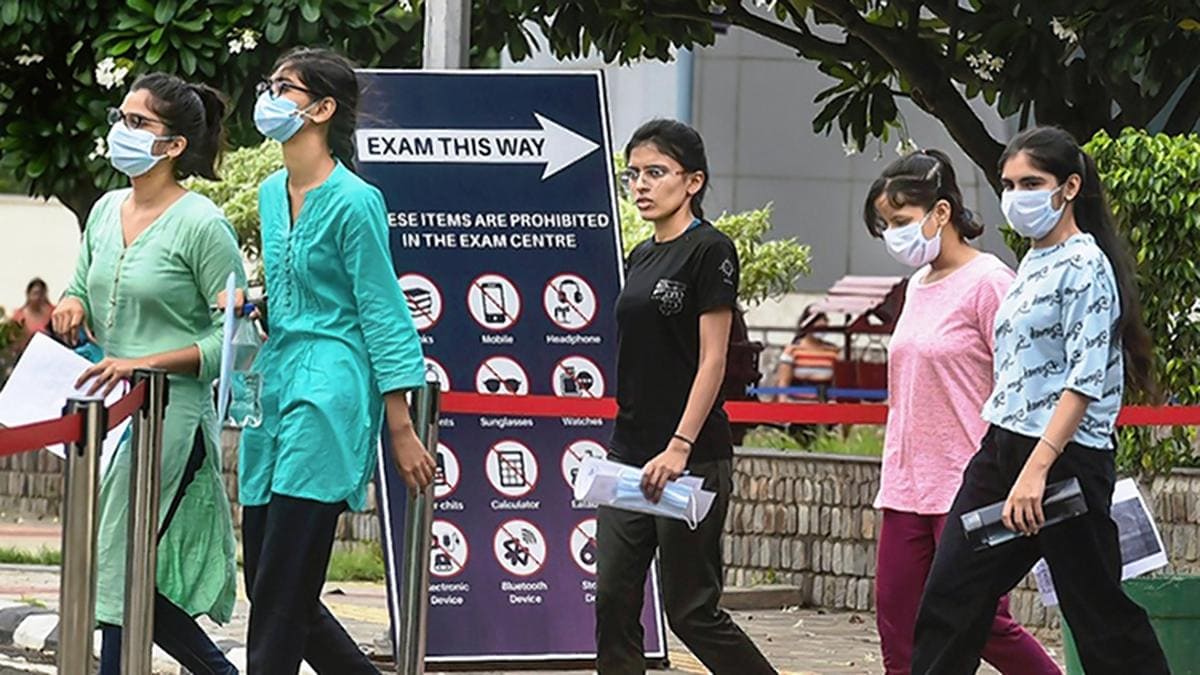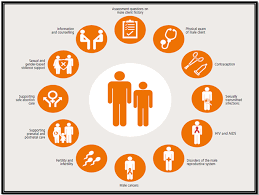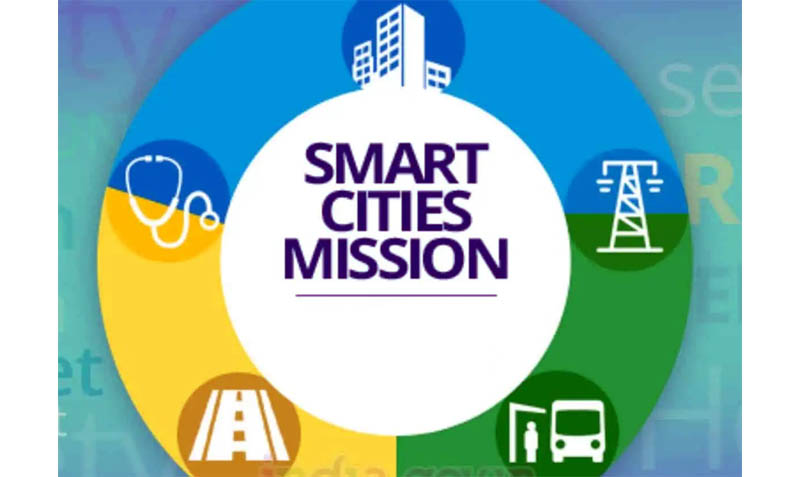The Hindu: Page 09
Syllabus: GS 02 – Social Justice
Practice Question for Mains
What are the limitations of the current regulatory framework in promoting research and innovation in Indian higher education institutions? Suggest measures to create a more research-friendly regulatory environment.
Context: The introduction of the NTA-run CUET in 2022-23 caused widespread delays in university admissions, including at JNU, despite its historical autonomy in conducting entrance exams.
- Controversies arose over the shift from traditional methods, highlighting tensions between standardized testing mandates and university governance autonomy.

Challenges with CUET and University Autonomy
- The introduction of NTA-run CUET in 2022-23 delayed admissions, including PhD programs, disrupting academic calendars.
- JNU, known for its autonomy in entrance exams, faced pressure from NTA directives, leading to an eight-month delay in PhD admissions.
- Despite UGC Regulations, 2022 allowing universities to conduct their own exams, some, including JNU, continued using NTA due to executive decisions.
Controversies and Transparency Issues
- Conflicting stances from the Ministry of Education and UGC on NTA’s role led to confusion.
- There was no documented agreement between JNU and NTA, raising questions about the decision-making process.
- NTA’s control over academic calendars disrupted traditional admission timelines, raising concerns about university autonomy.
India’s Higher Education System (Based on AISHE 2021-22 Report)
Student Enrolment Trends:
- Total Enrolment: As of 2021-22, 4.33 crore students are enrolled in higher education institutions, reflecting a notable increase from 4.14 crore in 2020-21 and 3.42 crore in 2014-15.
- Women’s Enrolment: Female enrolment has seen substantial growth, reaching 2.07 crore in 2021-22, a 32% rise from 1.5 crore in 2014-15.
- Postgraduate Representation: Women make up 55.4% of enrolment at the postgraduate level, showcasing strong gender representation at this stage.
Gross Enrolment Ratio (GER) and Gender Parity Index (GPI):
- GER for 18-23 Age Group: India’s GER stands at 28.4%, indicating the proportion of eligible students pursuing higher education.
- GPI for Gender Parity: The GPI at the national level is 1.01, reflecting near parity between male and female enrolment rates.
Discipline-wise Enrolment:
- Undergraduate Level: The most popular program is the Bachelor of Arts (BA), attracting 34.2% of students, followed by science (14.8%), commerce (13.3%), and engineering and technology (11.8%).
- Postgraduate Level: The social sciences dominate, with 10.8 lakh students enrolled.
- PhD Level: Engineering leads in PhD enrolment, followed closely by science and social sciences.
Dominance of Government Institutions:
- Student Share in Government Institutions: Government institutions are the primary choice for higher education, with 73.7% of students enrolled, even though these institutions account for only 58.6% of all universities.
- State Public Universities: These universities hold the largest share of student enrolment among government-run institutions, with about 31% of total enrolment.
Issues in India’s Higher Education Sector
Neglect of Research & Scholarship: Expansion of higher education for access has overshadowed focus on research and academic excellence.
Funding Disparities
- Central government prioritizes premier institutions, with state institutions receiving inadequate support since the Eleventh Five-Year Plan.
- Declining investment from State governments as education is a low priority.
- Direct UGC funding bypassing state governments fosters alienation.
- The demand to raise education spending to 6% of GDP remains unmet.
Low Enrolment Rates
- Gross Enrolment Ratio (GER) in higher education stands at 24.5%.
- Only 1.7% of colleges offer PhD programs, and 33% offer postgraduate courses.
- Research output and international collaborations remain weak.
Regulatory Challenges
- UGC and AICTE act as controllers rather than facilitators, with limited capacity to regulate diverse institutions.
- Over-regulation and licensing powers have hindered institutional autonomy and promoted corruption.
- The framework is based on mistrust, restricting universities from independent functioning.
Autonomy Issues
- Academic freedom, including admissions, syllabus, and faculty recruitment, is controlled by affiliating universities and state governments.
- Political interference in the appointment of vice-chancellors undermines institutional integrity.
- Faculty shortages and recruitment freezes weaken academic quality.
Problems with Ranking Systems
- NAAC’s inspectorial approach lacks reliability.
- NIRF emerged due to poor global rankings, yet domestic rankings fail to address global challenges.
Commercialization of Education
- Increasing commercialization of higher education leaves graduates unprepared for job market demands, as education does not align with industry needs.
Government Initiatives
1. National Education Policy (NEP) 2020
- Objective: NEP 2020 aims to revolutionize the education system by promoting multidisciplinary learning, enhancing skill development, and fostering research and innovation in higher education.
- Key Focus:
- GER Target: It seeks to raise the Gross Enrolment Ratio (GER) in higher education to 50% by 2035.
- Flexibility in Learning: Encourages flexible learning through the integration of creative subject combinations.
- Skill-Based Education: Focuses on equipping students with skills that improve employability and help them adapt to changing job markets.
- Multidisciplinary Institutions: Promotes the creation of institutions that offer a wide range of subjects, fostering holistic education.
2. Institutions of Eminence (IoE) Scheme
- Launch: Initiated in 2018 by the Ministry of Education.
- Objective: The scheme aims to recognize and empower 20 institutions (10 public and 10 private) by granting them complete autonomy to develop into world-class universities.
- Autonomy: These institutions are granted freedom in academic, administrative, and financial aspects, enabling them to innovate and achieve global standards.
3. National Credit Framework (NCrF)
- Purpose: Designed to integrate training and skill development into both school and higher education systems.
- Key Feature:
- Academic Bank of Credits (ABC): Allows students to accumulate credits from various courses, which are stored digitally and can be accessed through a Digilocker-linked account. This system ensures that skills acquired through non-traditional pathways are recognized and credited.
4. Revamped Accreditation and Ranking Systems
- National Institutional Ranking Framework (NIRF): Launched in 2015, the NIRF ranks higher education institutions across different disciplines such as engineering, management, and law, providing a clear benchmark for academic quality.
- National Assessment and Accreditation Council (NAAC): The NAAC has been modernized to continuously assess universities and colleges, ensuring that they maintain high academic standards and offer quality education.
5. Digital Initiatives in Higher Education
- SWAYAM: This platform offers free online courses that cover educational levels from school to post-graduation, expanding access to quality education, particularly in remote areas.
- National Digital Library of India: A digital repository providing access to a vast array of educational resources, including books, journals, and multimedia materials for students, educators, and researchers.
6. Study in India Program
- Objective: Launched in 2018, the program aims to attract international students to India by offering scholarships and simplifying the admission process for foreign students.
- Outcome: This initiative promotes India as a global hub for higher education, facilitating knowledge exchange and international collaboration.
7. Foreign Universities in India
- In 2023, the University Grants Commission (UGC) introduced regulations allowing top 500-ranked foreign universities to establish campuses in India.
- Goal: This move is aimed at enhancing the quality of education by bringing in international standards and fostering greater collaboration with global academic institutions.
Way Forward
1.Streamlining Regulation and Accreditation
- Simplifying the Regulatory Framework: Eliminate redundant regulations to create a unified and efficient system of governance.
- Broaden Accreditation Networks: Expand accreditation by recognizing a diversity of standards during the assessment process, promoting inclusivity and flexibility.
2.Expanding Access to Higher Education
- Support for Vulnerable Communities: Enhance opportunities for marginalized groups through scholarships, fee reimbursement programs, and other financial assistance.
- Reach to Underserved Areas: Use Massive Open Online Courses (MOOCs) and Open and Distance Learning (ODL) to provide education to geographically underserved regions.
3.Financing Higher Education
- Innovative Fund Generation: Leverage research infrastructure by allowing industry access to sophisticated equipment, generating revenue while improving utilization.
- Financial Support for Institutions: Offer one-time grants to help fill faculty vacancies and fund infrastructure upgrades, strengthening the educational ecosystem.
4.Improving Pedagogical Practices and Assessments
- Curriculum Reform: Develop a National Higher Education Qualifications Framework and a Learning Outcome-based Curriculum Framework to ensure alignment with contemporary standards.
- Institutional Curriculum Reviews: Create mechanisms for regular curriculum updates and establish guidelines to ensure their effective implementation.
5.Fostering Research and Innovation
- Strengthening Research Networks: Encourage collaboration between local higher education institutions to build a robust research ecosystem.
- National Research Funding Body: Establish a central organization dedicated to advancing research excellence, fostering innovation, and developing research infrastructure.
6.Enhancing Skills, Employability, and Entrepreneurship
- Integration of Vocational Education: Introduce a formal vocational education track within colleges, with a credit system applicable to both vocational and non-vocational courses.
- Skill-Based Curriculum: Revise vocational education curricula to include credit-based skill courses that are aligned with industry needs.
7.Leveraging Technology for Learning
- Advancing EdTech: Establish Centers of Excellence in top institutions to support research in educational technology and provide incubation support for startups.
- AI-Driven Learning Platforms: Develop AI-based platforms offering personalized learning experiences, adaptive assessments, and real-time progress tracking for students.
8.Internationalization of Higher Education
- Global Academic Collaborations: Expand partnerships with international institutions for joint research, knowledge exchange, and academic collaboration.
- Cross-Border Education Programs: Promote the mobility of educational programs and facilitate the international delivery of higher education through collaborative initiatives.








